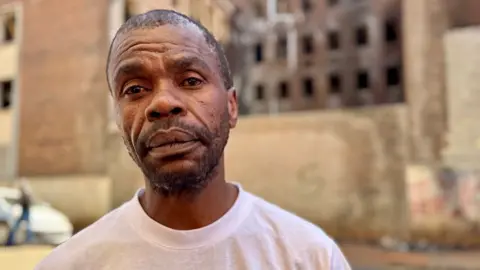Blackened by soot, the gutted and derelict remains of South Africa's infamous Usindiso building in central Johannesburg are an unintentional memorial to the 76 people who died here in a devastating fire two years ago.
Once an office block, the 1950s building in the Marshalltown area was abandoned and then taken over by several hundred people desperately needing housing. Vusi Tshabalala remembers the horrifying night vividly, describing how they escaped the flames by covering themselves with wet blankets.
After the tragedy drew national attention to housing inequalities, promises were made for change. Yet, two years later, many survivors still reside in insecure conditions plagued by gun violence, abandoned buildings, and poor living conditions. Tshabalala's current makeshift home, dubbed Emaxhoseni, is overcrowded, unsanitary, and close to the site of the fire.
Survivors like 29-year-old Thobeka Biyela continue to express fears for their safety, having suffered violent acts—including being shot while at home. Despite the threats, many feel forced to remain in precarious living situations due to a lack of affordable housing options.
Legal advocates highlight systemic failures in providing adequate housing after evacuations or disasters, emphasizing a need for tangible governmental support as the survivors wait in limbo for a promised solution that seems increasingly distant.
The situation underscores not only the immediate impact of the fire but also the deep-seated challenges of urban poverty and inadequate governance that continue to plague communities in Johannesburg.




















